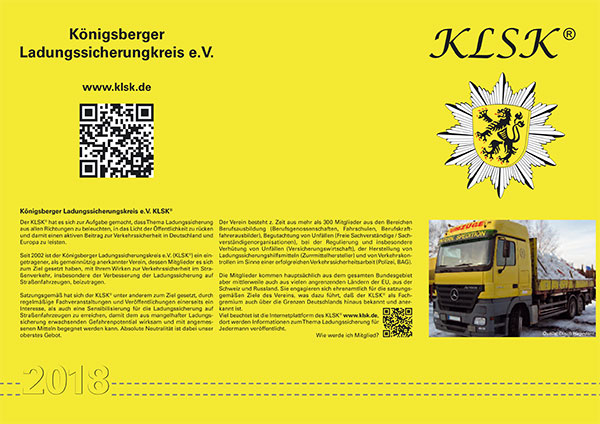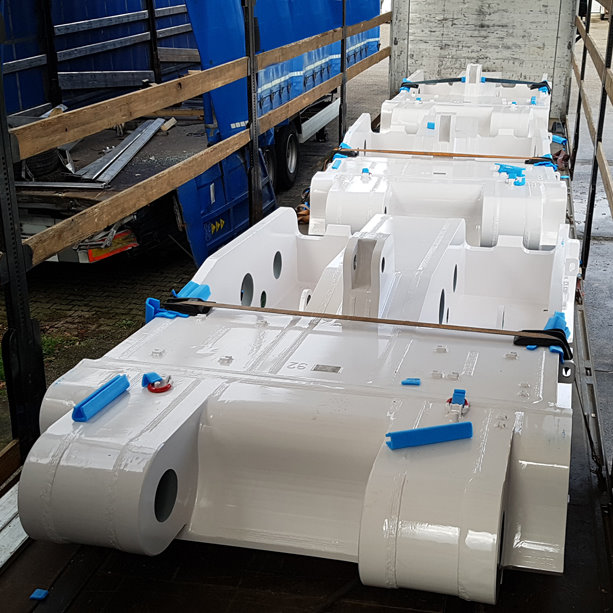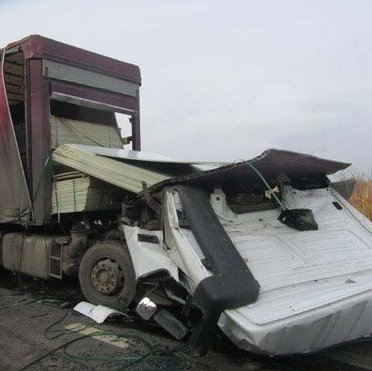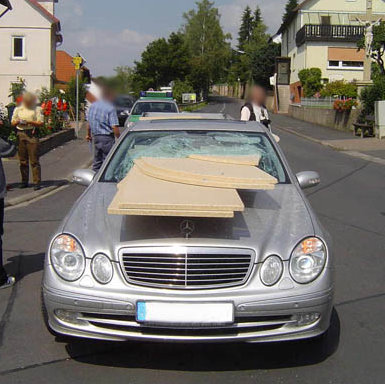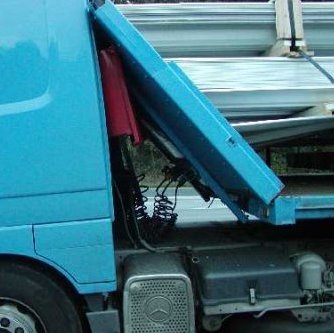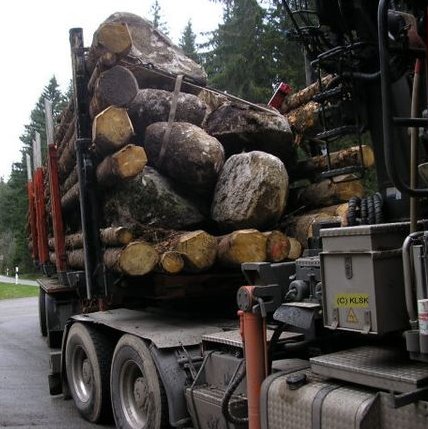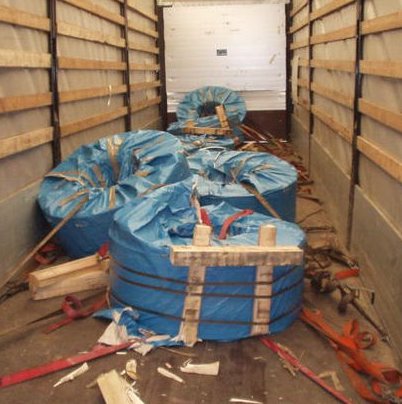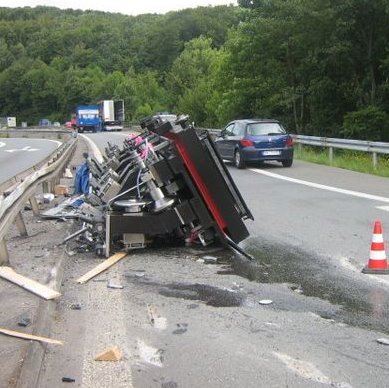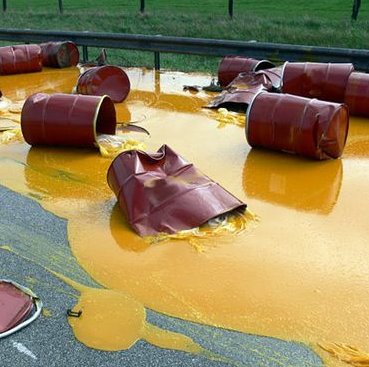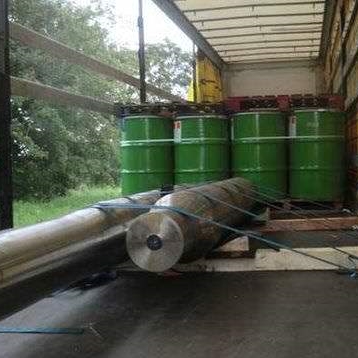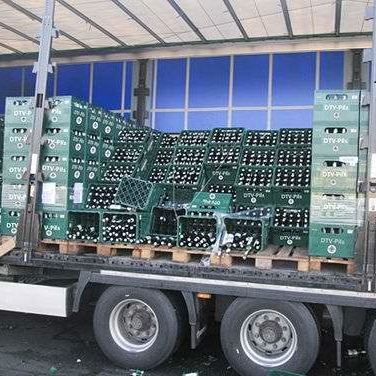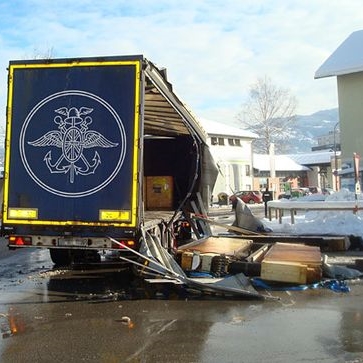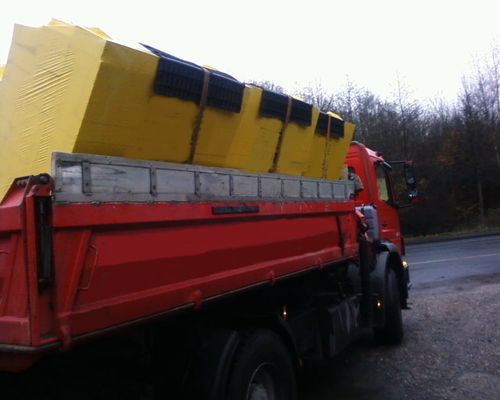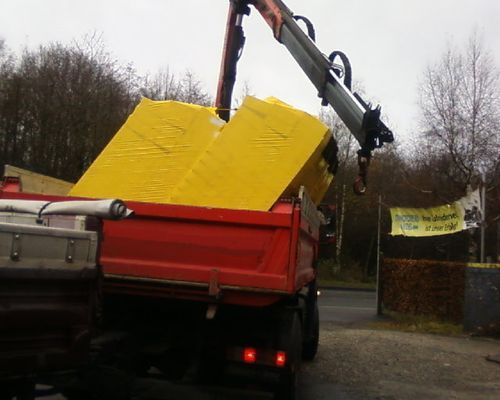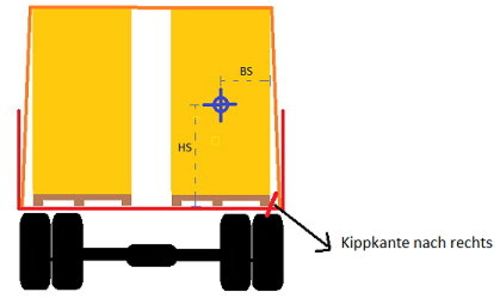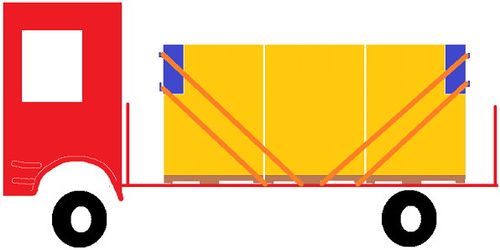The domino effect
The domino effect refers to a sequence of events, mostly of a similar nature, in which every single event at the same time acts as the cause of the following event, and all of which can be traced back to a single initial event. (Translated from Wikipedia.)
Where is the start of this chain reaction in the figure below?
From the rear you can see that further pallets are standing next to these pallets or are now leaning against the side wall.
Why are they no longer standing upright?
According to the driver, this is what happened:
Six pallets were placed on the loading area in pairs. The pairs of pallets were not placed directly next to each other, because the pallets were loaded using pallet tongs. The next two rows were placed directly against the previous one.
This created a tight fit to the front, right up to the end wall.
The was a gap in the load along the center and the loads did not form a tight fit to the side walls. The pallets on which the aerated concrete blocks were packed to form load units had a footprint of 125 x 75 cm. The height was approximately 165 cm. Each pallet weighed approximately 550 kg. No anti-slip materials were used underneath the load.
A lashing belt was placed over each pair of pallets. Plastic edge protectors were used on the corners in order to allow the pre-tensioning force introduced into the lashing belts to secure the greatest possible part of the load and to protect the pressure-sensitive load from the belts.
The gap through the length of the load between the pallets was not filled in and prevented any effective pre-tensioning force from being introduced into the lashing belts with the ratchet handles, since the packages would simply have tipped inwards. This could have been avoided if the packages had been loaded as a tight fit. If the pallets cannot be placed together in the center, the resulting gap in the load must be filled in.
And this was exactly what did not happen in this case, which caused the load’s downfall, or, to put it another way, this was the "initial event" in the chain.
The vehicle was traveling at a normal speed into a slight left-hand bend. The driver noticed the vehicle rocking, coupled with a dull thud.
After he had stopped, he saw the situation shown in Figures 1 and 2.
So what happened?
As the vehicle negotiated the left-hand bend, the pallets loaded along the loading area were subjected to a centrifugal force and, because their geometry made them liable to tip, they tipped to one side like dominoes. Fortunately, they came to rest against the side wall. And the shrink film used to form the load units was able to withstand the obvious need the load had for support.
If a load is liable to tip, it must be secured better than a load that is not liable to tip.
It is easy to identify whether this load is liable to tip:
o start with, the center of gravity must be determined. With a homogeneous load like this, this is very simple. It is exactly in the middle of the package of concrete blocks. This is indicated in the diagram by a blue cross in a circle (the center of gravity symbol). Now we determine the position of the center of gravity in terms of its height above the loading area and the lateral distance to the tipping edge of the load.
The load is approximately 1.65 m high including pallet, and the vertical component of the center of gravity is at half this height, i.e. 82.5 cm.
The load is 75 cm wide, and the lateral component of the center of gravity lies at half this distance, i.e. 37.5 cm.
Calculation: | Lateral 37.5 / Vertical 82.5 | |
When calculating the risk of tipping to the side, the result of the calculation must be at least 0.7, in which case the load is stable and not liable to tip.
The resulting stability in the direction of travel must be at least 0.8, and against the direction of travel, 0.5.
In this case, we see that the result to the side is 0.45. This means that the load is liable to tip to the side.
What the driver saw when he had a look at the load confirms our calculation!
How can this load be secured on the loading area simply and safely?
It is not particularly difficult to secure this load. You just have to approach the problem a little differently. Gaps in the load must always be avoided. If it is not possible to load the packages in a different way, because no suitable loading equipment is available, securing the load becomes more complex. The spaces in the middle of the loading area must be filled using pallets, airbags or squared lumber.
If anti-slip materials are then placed under the pallets, a single lashing belt over each pair of pallets is sufficient to secure the load to all sides.
If the friction is not increased and if there is no tight fit to the end wall, additional securing must be provided in the direction of travel and against the direction of travel.
Corner brackets placed on the outer corners at the front and back of the load are of assistance here. Depending on the overall weight of the load, you can use one or two lashing belts as slings to achieve a tight fit as shown in the diagram below.
A company that manufactures aerated concrete blocks and, among other things, also uses yellow shrink film, takes great care to ensure that no vehicle leaves the company premises if the load is inadequately secured. This case therefore suggests that this vehicle was not loaded at the premises of the company concerned, but rather at a builders‘ yard.
This company offers its customers fork extensions to allow the pallets to be loaded as a tight fit on the vehicle using a forklift truck.
However, because a forklift truck is rarely available on a building site, it is necessary to revert to pallet tongs (or lifting slings). The pallets would be loaded hard up against each other, and the tongs would no longer be able to be placed between them. So what can we do?
In this case, the company that uses the yellow shrink film is again able to assist. It provides a withdrawal extension that is simply attached to the tongs. This pulls the pallet out a little, so that the tongs can then be used to unload the pallets.
With a little effort, the "event" described at the beginning can be avoided from the outset.
